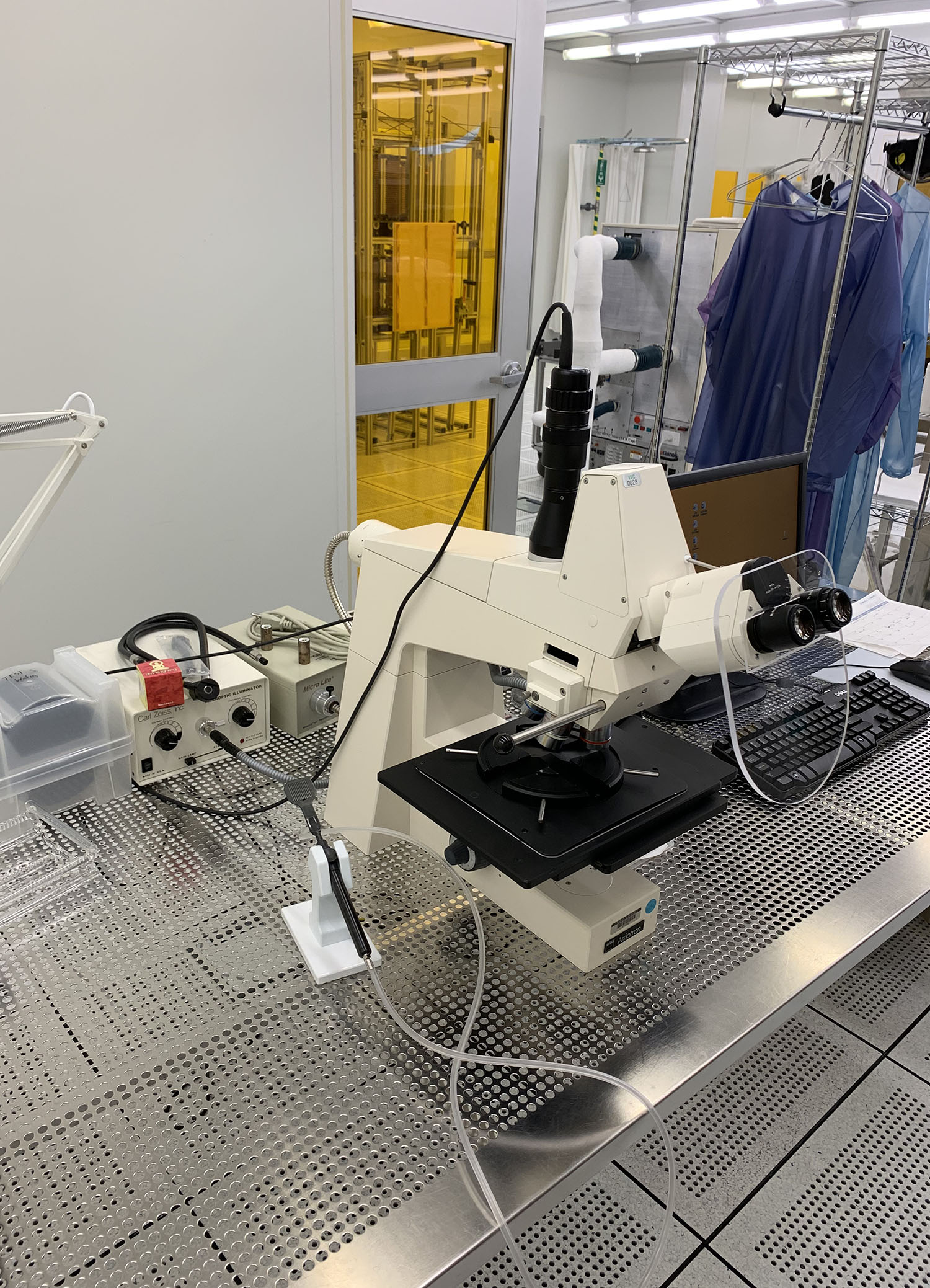The Nomarski Contrast Microscope is a specialized microscope enabling the user to see enhanced sample features at differing magnifications. It allows viewing of wafer samples up to six inches in size.
Nomarski microscopy, also known as Nomarski interference contrast (NIC) is an optical microscopy technique used to enhance the contrast in unstained transparent samples. It is also called differential interference contrast (DIC) microscopy. It works on the principle of interferometry to gain information about the optical path length of the sample to see otherwise invisible features. NIC produces an image with the object appearing black to white on a grey background and is similar to that obtained by phase contrast but without the bright diffraction halo.
DIC or NIC works by separating a polarized light source into two orthogonally polarized mutually coherent parts which are spatially displaced (sheared) at the sample plane, and recombined before observation. The interference of the two parts at recombination is sensitive to their optical path difference (i.e. the product of refractive index and geometric path length). Adding an adjustable offset phase determining the interference at zero optical path difference in the sample, the contrast is proportional to the path length gradient along the shear direction, giving the appearance of a three-dimensional physical relief corresponding to the variation of optical density of the sample, emphasizing lines and edges though not providing a topographically accurate image.
- differential interference contrast microscopy
- Nomarski microscopy
| Service | ASU rate | Nonprofit/other academic rate | Notes |
|---|---|---|---|
| Equipment use | $36/hour | $50/hour |


